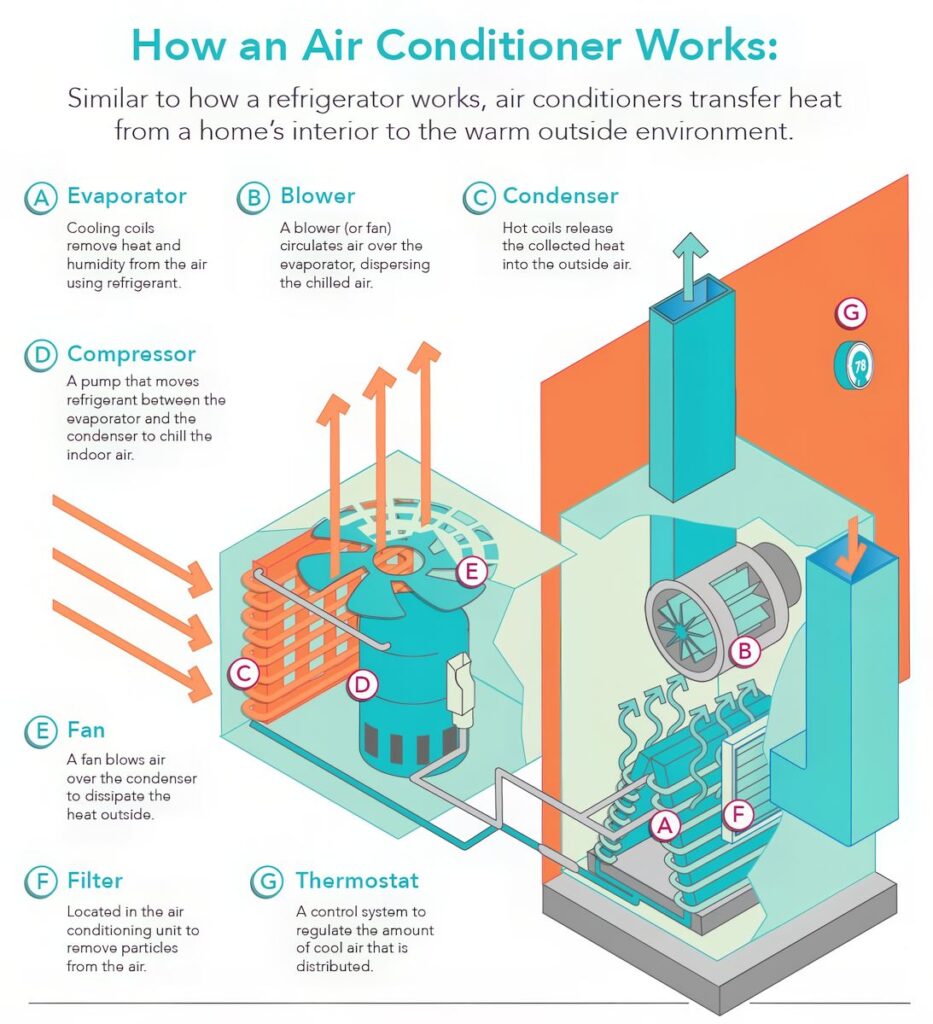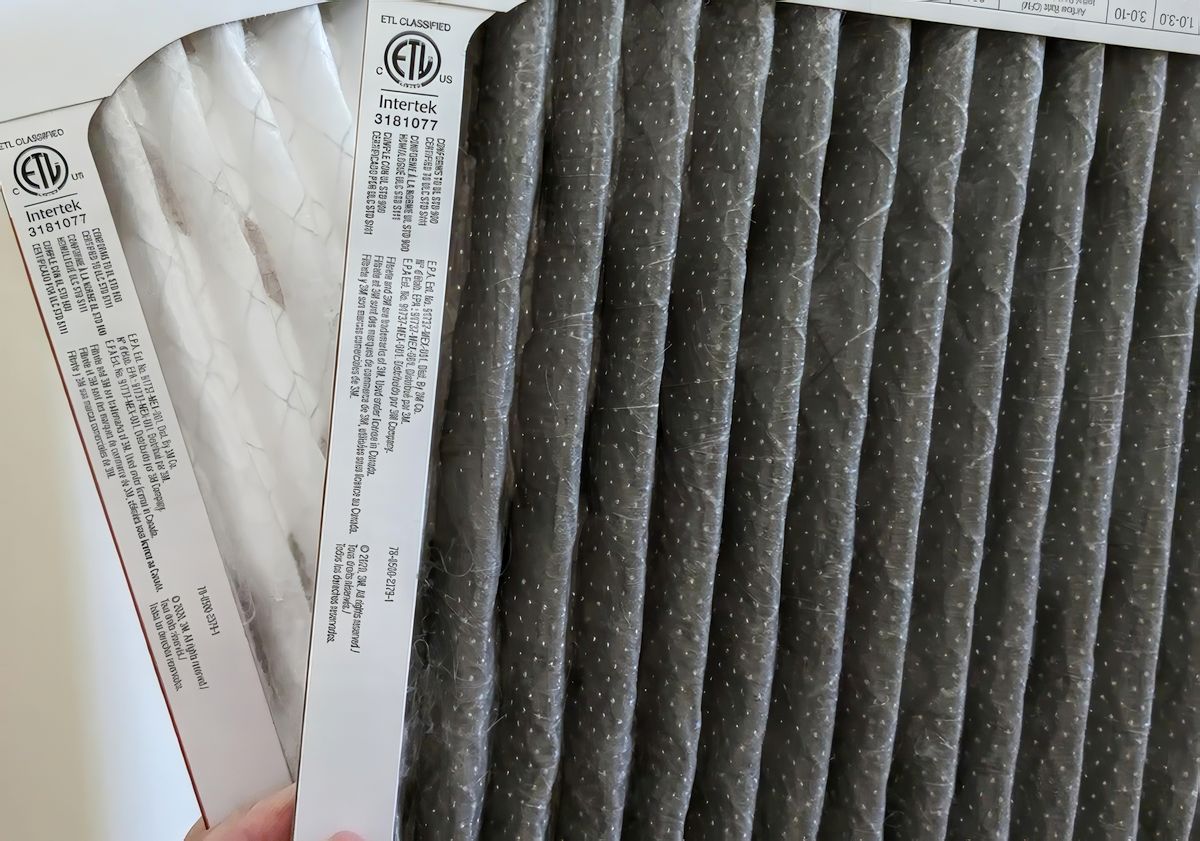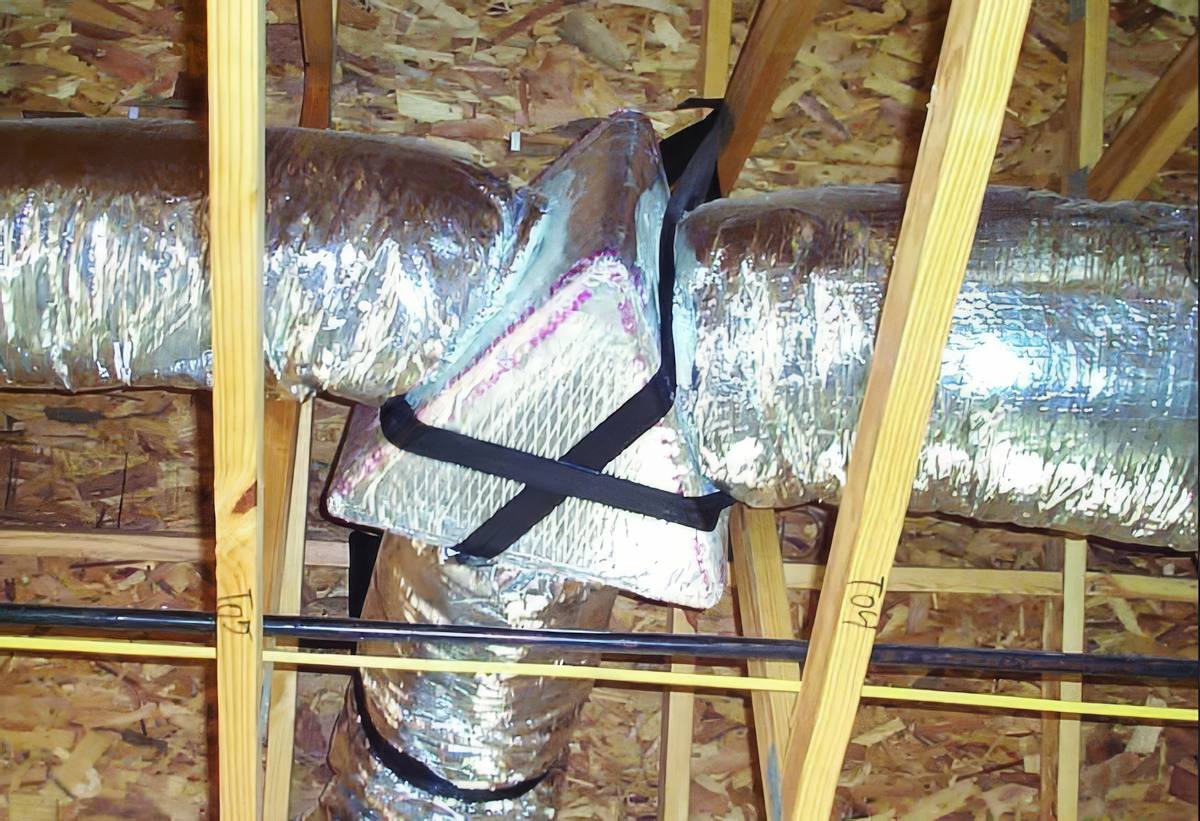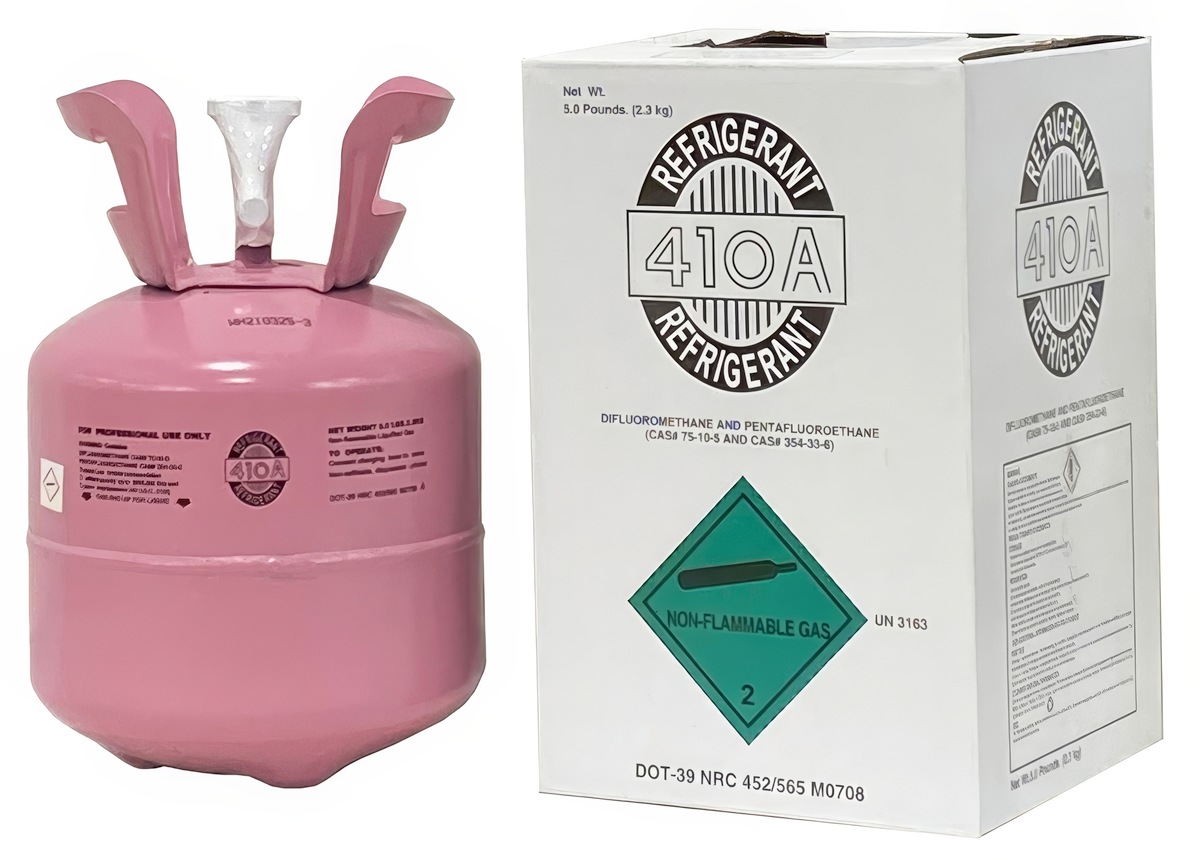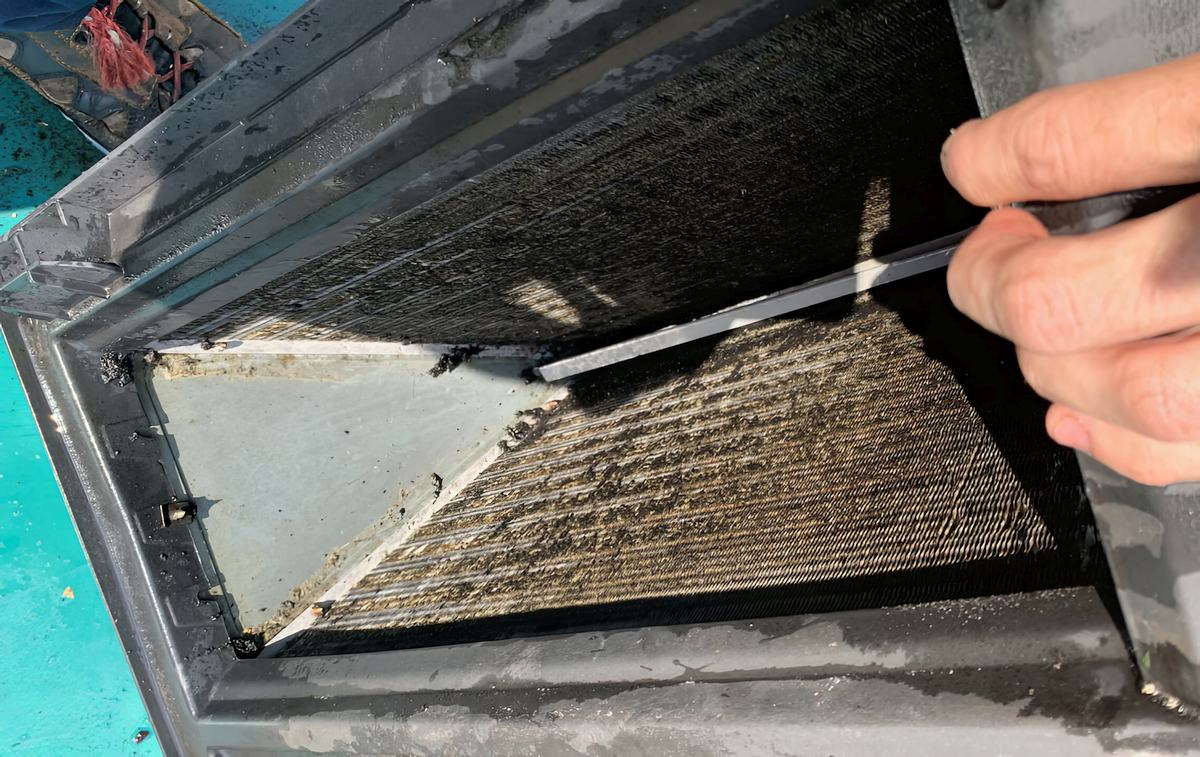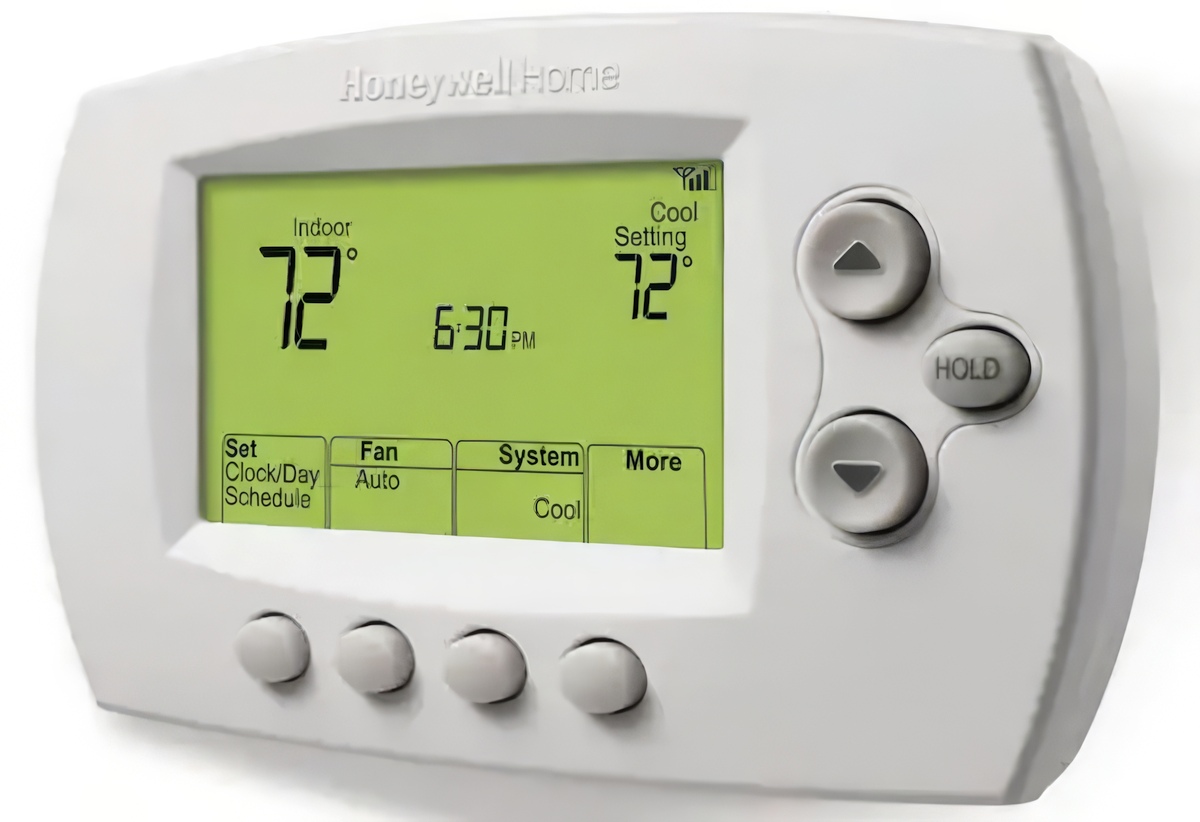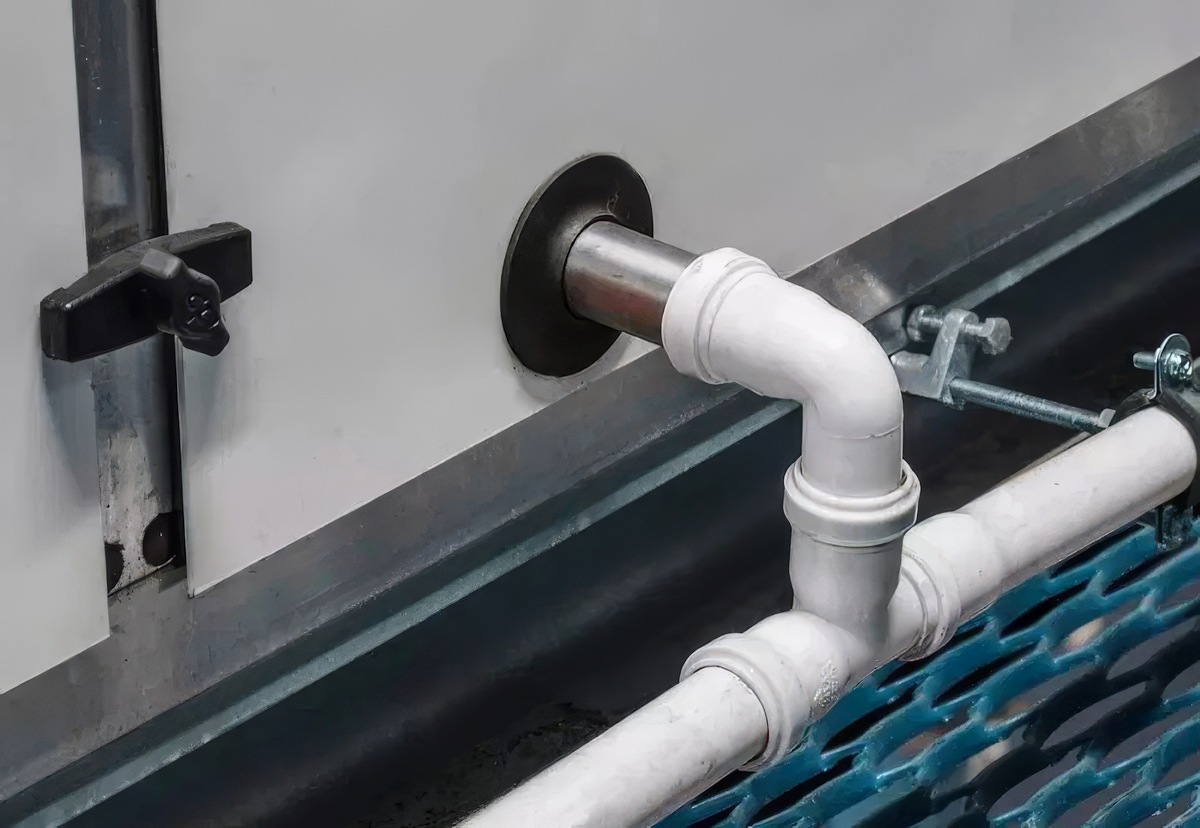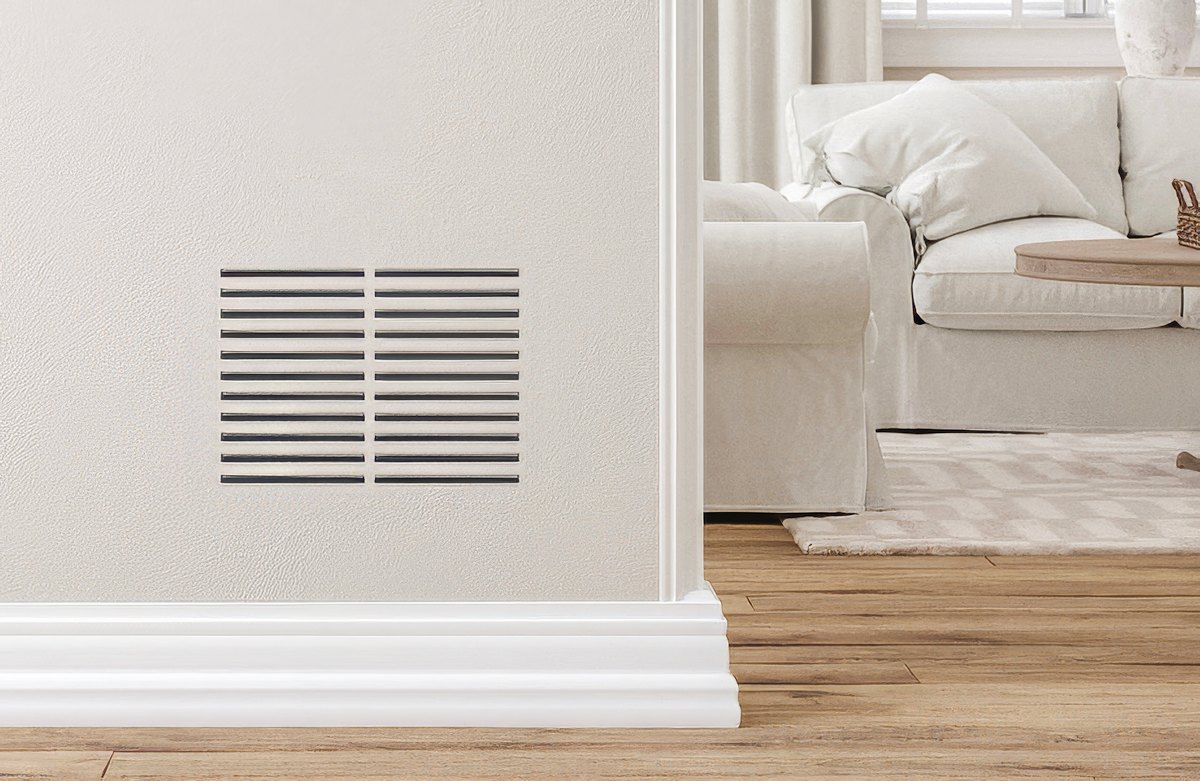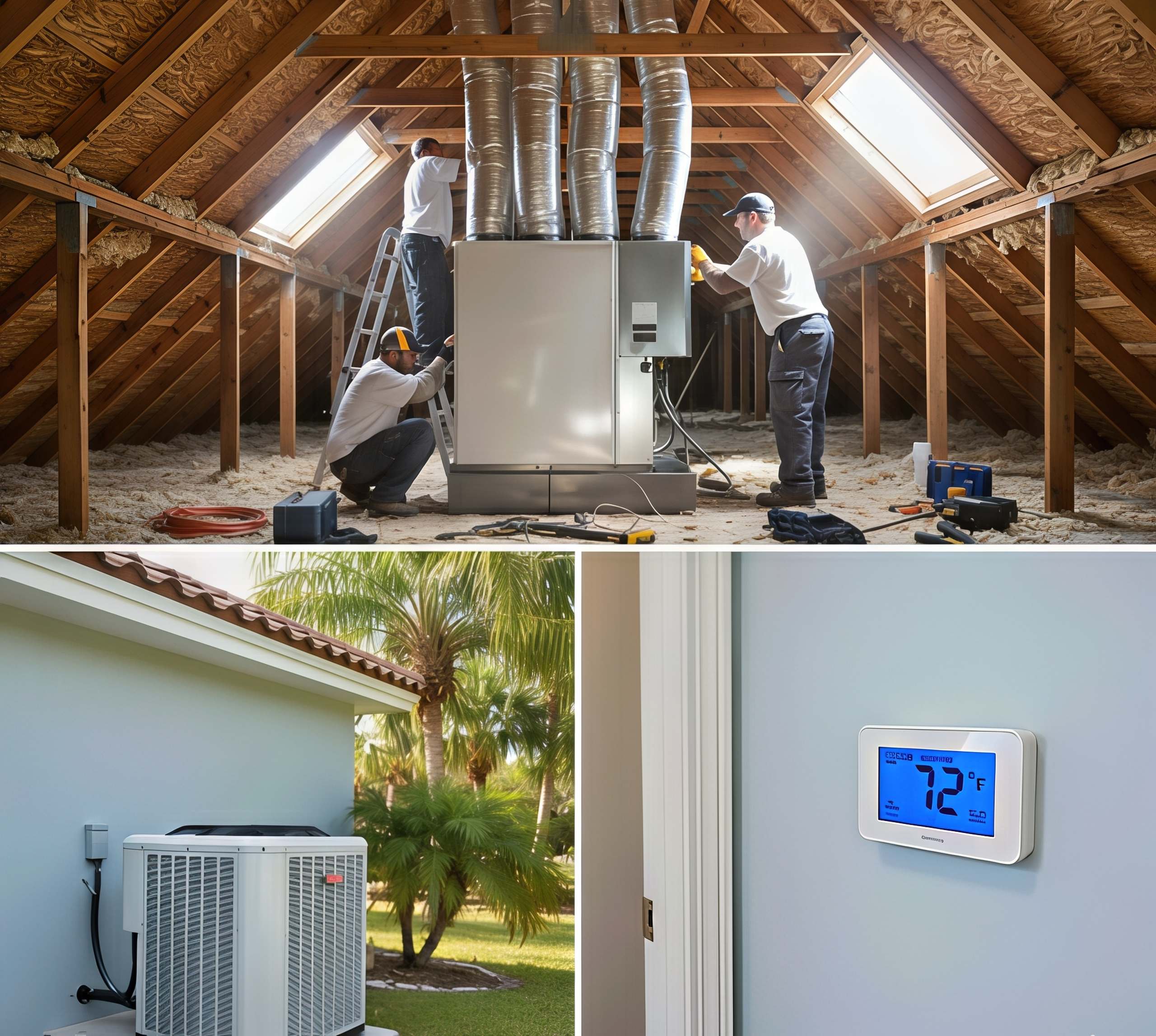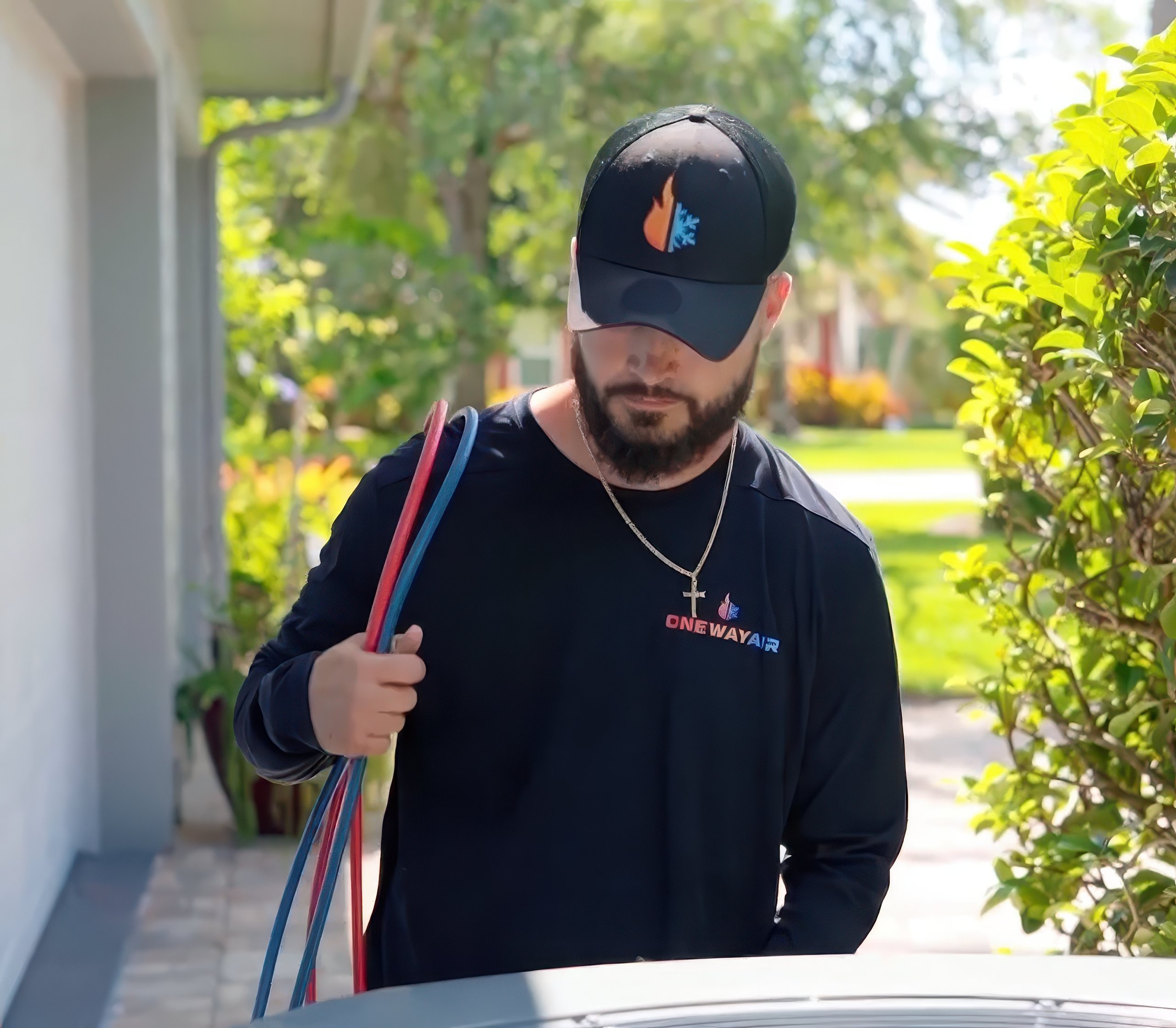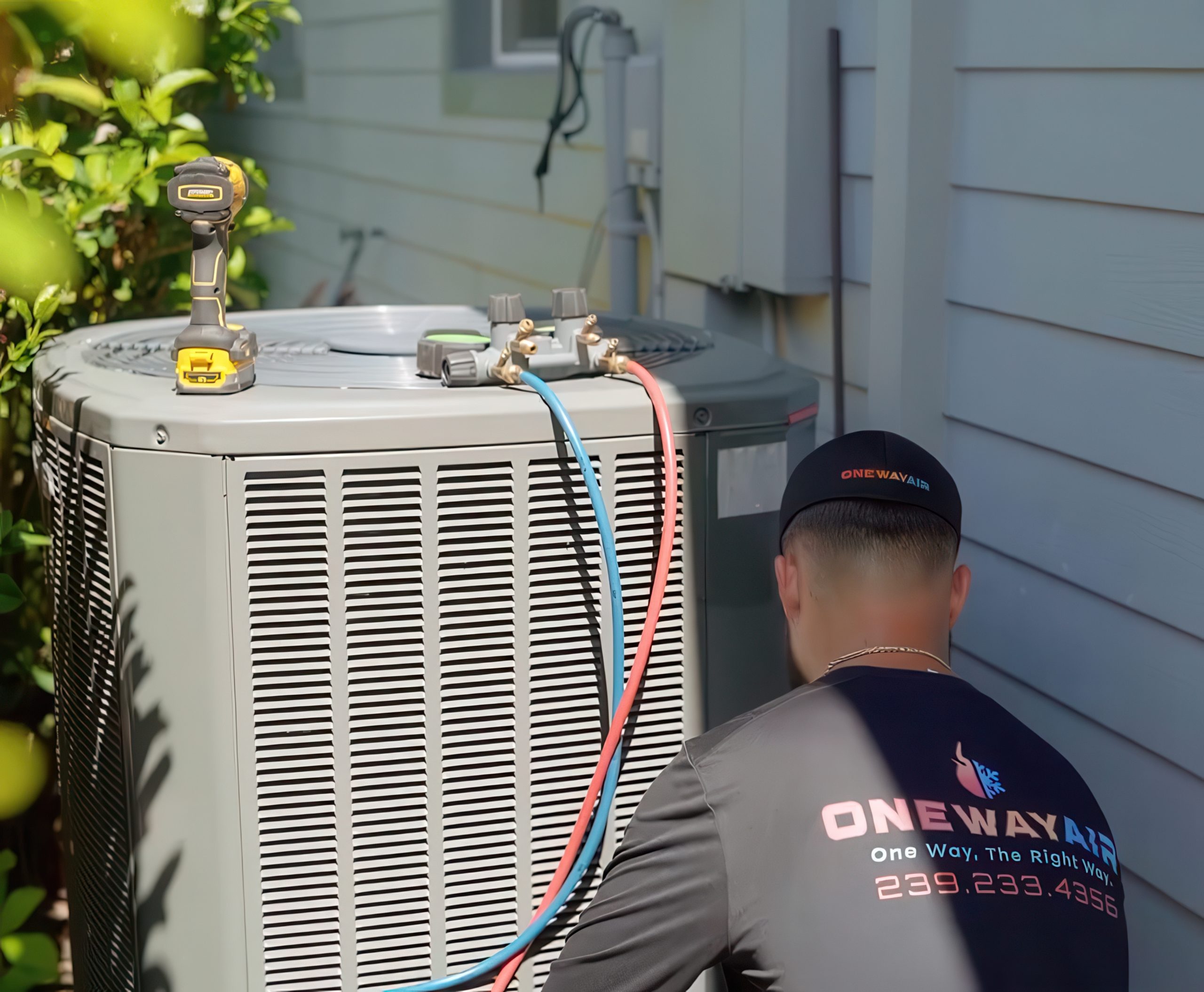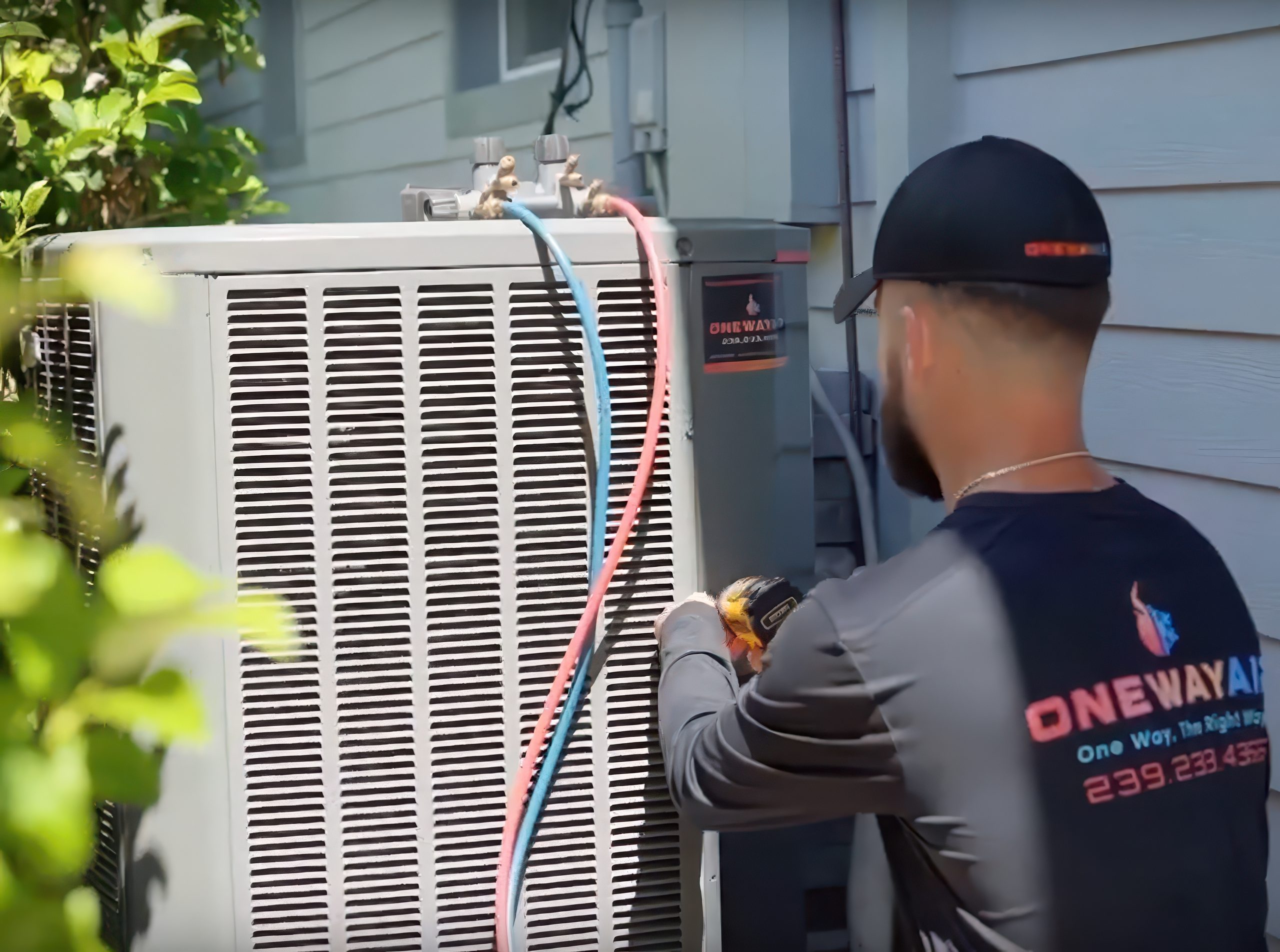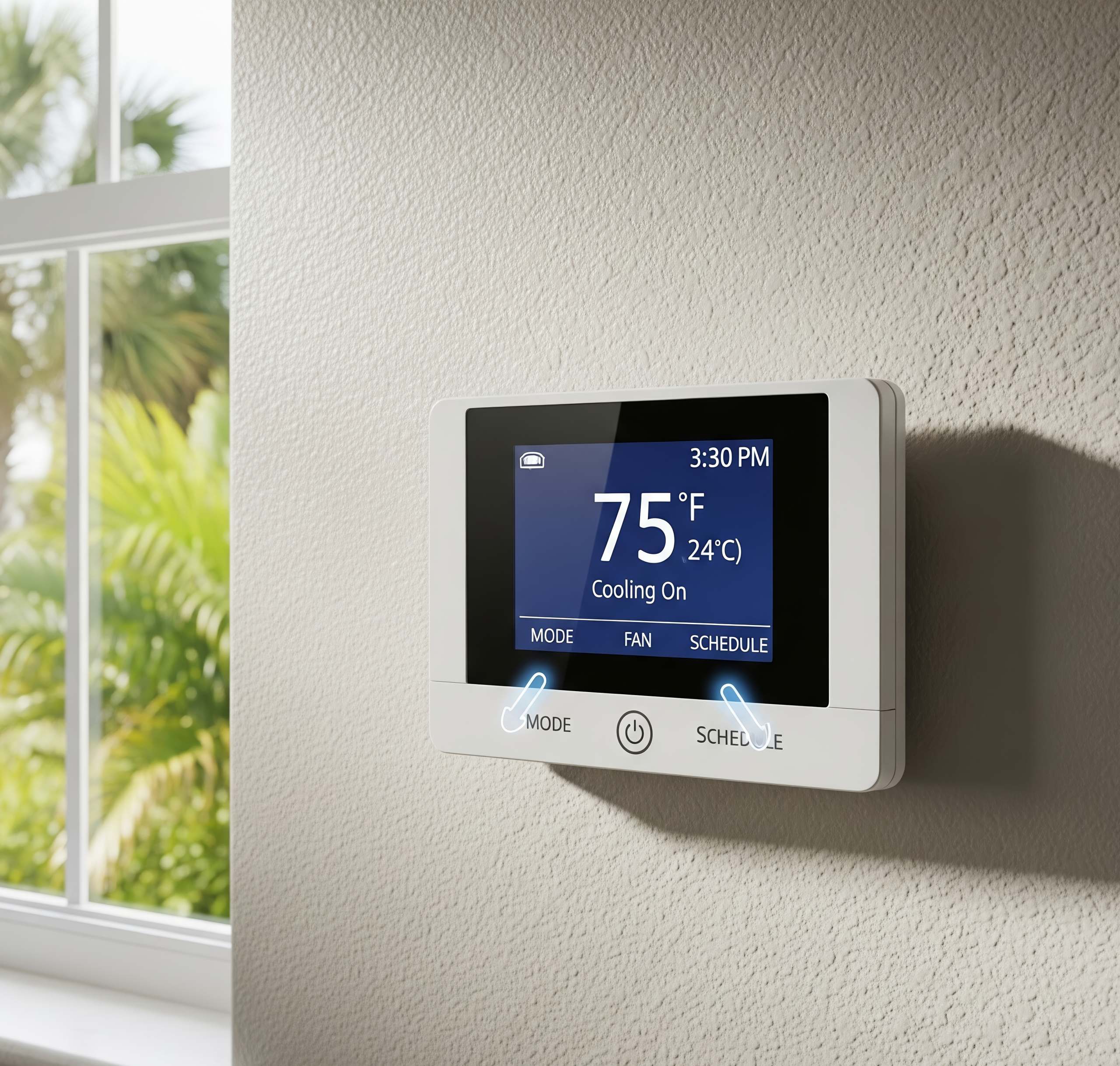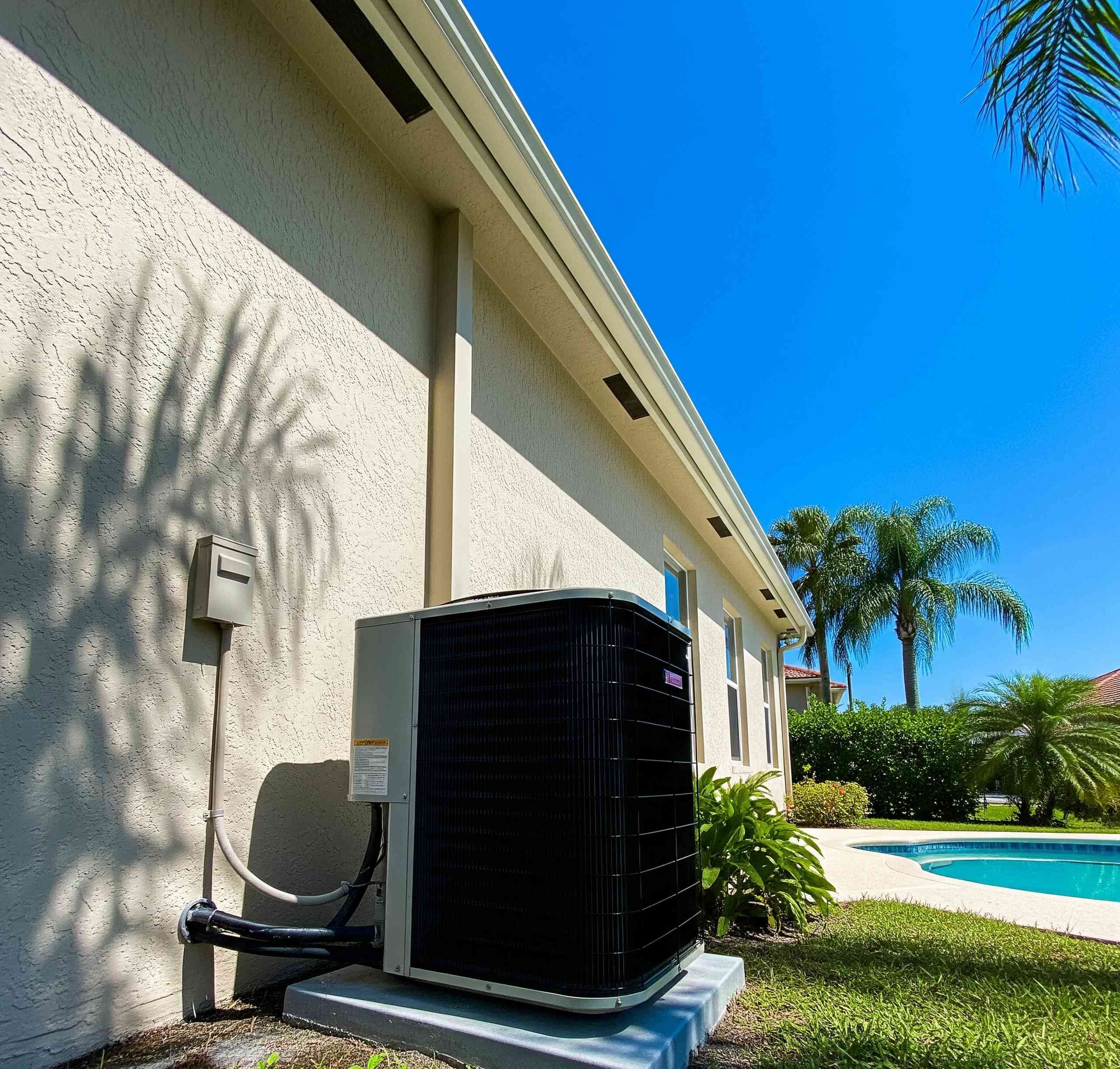Ice on the AC unit inside the home is an alarming sign that something’s wrong with the air conditioning—but the good news is that there’s usually a relatively simple explanation.
Most commonly, frozen AC units are down to poor airflow, which in turn could be due to several causes—but ice may also form on the inside AC unit for other reasons. Besides being alarming, ice is also a sign of an inefficient system that needs troubleshooting and prompt attention to prevent potentially expensive damage and further HVAC problems.
It’s unlikely to fix itself, so let’s take a closer look at how to identify the cause of the problem and prevent or fix it…
WHY IS THERE ICE ON THE AC UNIT INSIDE?

Ice on an AC unit inside the home is usually due to restricted airflow (from dirty filters or blocked vents), low refrigerant levels, dirty evaporator coils, thermostat problems or drainage issues. Ice formation means that moisture in the home is not being removed by your AC and a professional HVAC technician may be required to troubleshoot and fix the issue.
Below, we take a deeper dive into the main reasons why ice forms on the inside unit and what to do about it…
STAY COOL ALL YEAR ROUND WITH ONE WAY AIR…
The team at One Way Air installs, services, and repairs all types of air conditioning systems in Southwest Florida. Get in touch with us here for a quote or call 239-233-4356 in emergencies.
HOW CAN ICE FORM ON AN AC UNIT?
Ice on AC units—even in sub-tropical climates like Florida—is not as rare as you may think. It’s quite a common sight for air conditioning systems that are older, not maintained regularly or overworked.
The cost of air conditioning in southwest Florida is high but so are the temperatures. So, most homeowners need their systems to work for much of the year—and this requires all parts to work in harmony.
As you can see from the following diagram, multiple components must work in tandem with good airflow and a healthy supply of refrigerant…
Refrigerant works with the evaporator coils in an AC system to absorb heat, remove moisture, and cool the indoor air. The entire heat transfer process relies on the correct pressure and free flow of air in the right directions. Good airflow prevents moisture in the air from settling on the coils and freezing.
If the delicate balance of airflow and pressure is upset in any way, the system can fail, ice can form, and other problems result.
MAIN REASONS FOR ICE ON AN INDOOR AC UNIT: DEEPER DIVE
Let’s examine each of the reasons why you might see ice on an inside AC unit in more detail…
Restricted airflow
Restricted airflow is a big problem for any HVAC system, whether you use a heat pump, ductless mini split air conditioner or central AC. It’s the number one reason for ice on the inside AC.
When airflow is blocked, the system cannot remove warm air and moisture from the home effectively, leading to frozen condensation on the coils and frost or ice forming.
Common causes of restricted airflow are:
- A dirty air filter: probably the most common reason for blocked airflow is dirty filters. Both HVAC filters and filters within ductless mini-splits need cleaning or replacing every 1-2 months or more regularly if you have pets, constriction work or allergy sufferers in the home.
- Blocked or closed vents: in central AC systems, the return vents draw air into the system and supply vents distribute the conditioned air to rooms via the ductwork. If these are blocked by furniture, boxes, drapes or any other obstruction, airflow in the system can become restricted and cause multiple issues, including ice.

- A malfunctioning or dirty blower fan: one of the most likely components to cause ice in an AC is the blower fan, which is responsible for blowing air across the evaporator coils and cool air being pushed through the ductwork throughout your home. AC fans need regular maintenance to keep doing their job properly and if this is neglected, they can stop working and require AC repairs or become obstructed by dirt and dust.
- Damaged ductwork: many homes in Florida use flexible HVAC ducting to deliver conditioned air around the home. If a section of ducting gets crushed by a fallen object or another obstruction, this can restrict airflow around the system and lead to ice buildup on the evaporator coil. However, this is relatively uncommon in systems that are professionally installed and properly maintained.
Low refrigerant levels
Refrigerant (sometimes called AC coolant) powers both air conditioners and heat pumps. Its ability to switch between liquid and gas form enables the pressure changes necessary for heat transfer in HVAC systems, moving warm air outside the home and replacing it with cold air.
Any reduction in the refrigerant level supply can put the system out of whack and cause multiple issues, including ice on the inside AC unit.
Most times, refrigerant moves through a closed system within the cooling equipment. However, if a leak develops in the refrigerant line, refrigerant levels can gradually decline. This needs immediate attention because it may impact more than the temperature of your home—refrigerant can be harmful to health and should only be handled by licensed professionals.
Besides ice forming inside, another tell-tale sign of low AC refrigerant levels is weak cooling performance, i.e., the AC is running but not blowing cold air.
Your home AC system likely uses Puron (R-410A), Freon (R-22) or perhaps a next-gen coolant like R-32 or R-454B if it is a recent AC installation.
Find out more about the right refrigerant to use in home AC in Florida here.
Dirty evaporator coils
The evaporator coils in AC systems work in tandem with refrigerant to cool the warm air inside the home before the air is re-distributed around the home by being blown through the ductwork.
If the coils become dirty or clogged with dust or debris, the heat exchange process and cooling efficiency of the entire system are impacted. Unless the problem is addressed, ice may form on the evaporator coils inside the home.
AC coils need regular cleaning to prevent problems and this should be part of routine AC maintenance schedules.
Faulty AC thermostat or temperature issues
The AC thermostat communicates with the air conditioner to run the cooling cycle when required and stop it when the desired temperature has been reached.
A malfunctioning thermostat sensor could send incorrect signals to the AC, causing it to run too long and freeze the coils or short-cycle, which can also create similar problems.
It’s important to both maintain a functioning thermostat and ensure that the settings are correct. Settings can sometimes be changed by accident or intentionally by other occupants of the home.
If the thermostat is poorly positioned in the home or the temperature settings are too low for extended periods, the AC may run continuously, causing the evaporator coil to get too cold and freeze up. To understand more about the best temperature to set the thermostat in Florida, read this.
Drainage problems
Another rarer (but possible) cause of ice on an AC unit inside the home is drainage issues with the condensate line. This dedicated pipe is responsible for channeling water removed from the indoor air outside the home.
If the line becomes clogged with debris, excessive moisture may build up in the system and water may freeze on the evaporator coils. Even if there is no ice, other problems such as mold, poor indoor air quality or inefficient cooling can result from excess moisture in the home.
You can check what the ideal humidity level of a Florida home should be here. If it is too high, take steps to reduce it.
HOW TO FIX ICE ON AN INDOOR AC UNIT
Generally, it’s best not to risk damage by running your AC at all when it’s frozen. Damage can be caused to expensive parts like the compressor, which could lead to costly AC repairs or replacement.
Troubleshooting an AC system should normally be left to HVAC professionals, especially if it requires handling refrigerant or electrical matters. Some homeowners, however, like to know the steps to defrost their air conditioner if it freezes up…
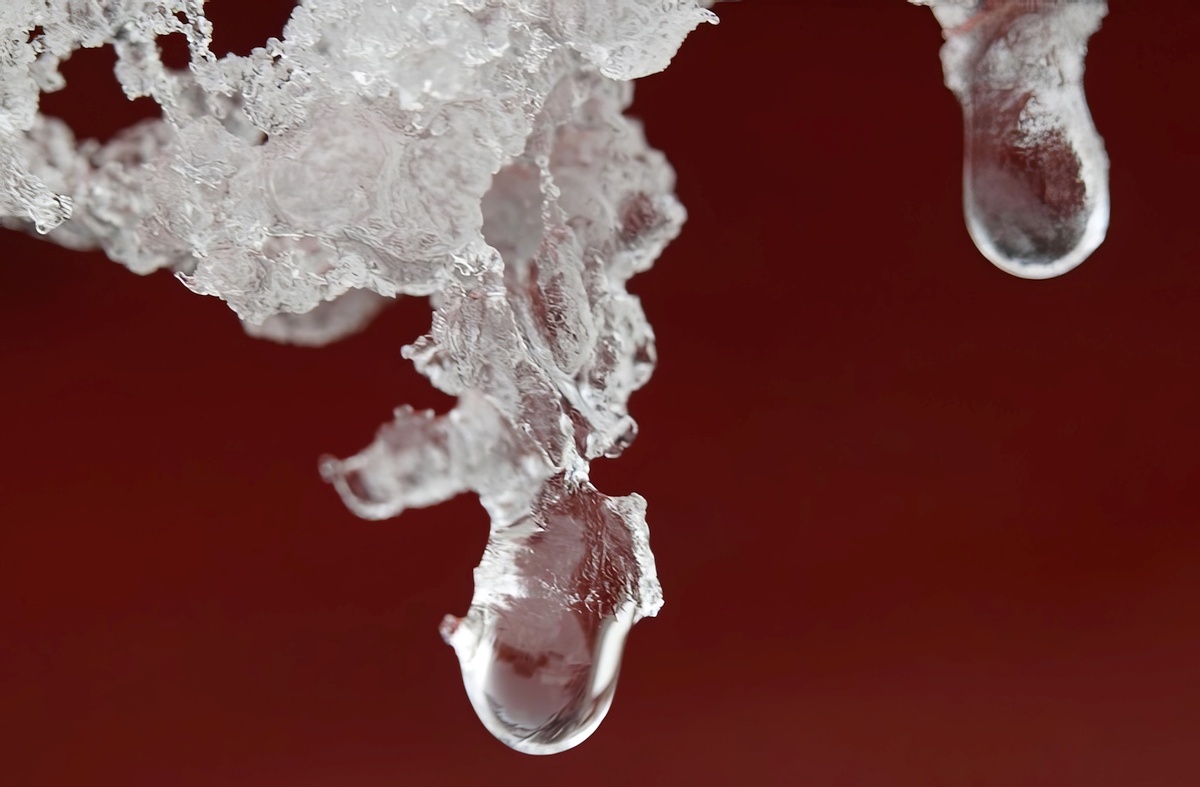
Here’s what you need to do:
- Turn off the AC at the thermostat.
- Turn the fan to ON so that warm air will blow through the system and over the frozen coils continuously for a period.
- Put some towels around the floor underneath the unit and watch for any pools of water forming.
- Wait until the ice in the air conditioner has completely defrosted: anywhere from an hour to most of the day (the earlier you detect the problem, the less time it should take to defrost).
- Once the AC is fully defrosted, don’t forget to switch the AC fan back to AUTO.
If possible, check for a dirty air filter and clean or replace it if it has gathered much dirt and dust. Some HVAC filters are cleanable and others need replacing every 1-2 months. Yours should specify if it’s cleanable but most are disposable. Also, make sure that the supply and return vents are not obstructed by anything.
If the defrosted air conditioner freezes up again after you switch it on, call an HVAC professional to check the system for dirty evaporator coils, leaking refrigerant, malfunctioning blower, blockages in the condensate line, etc.
FAQs
Air conditioners typically last 8-14 years or more if well maintained but because of the high amount of work they must do in the Florida heat, their lifespan may be a few years shorter here than in other parts of the country. More about how long your AC unit should last here.
An oversized AC that is too powerful for the space it is intended to cool may cycle on and off too quickly, not allowing enough time to remove moisture from the air. This can cause conditions that lead to the evaporator coil freezing but is quite uncommon for air conditioning units that are professionally sized and installed.
Most problems associated with ice formation inside the AC unit do not require a replacement air conditioner. The exception may be if you have an expensive issue like a compressor, evaporator coil or refrigerant leak problem that can’t be fixed and your AC is already more than 8-10 years old.
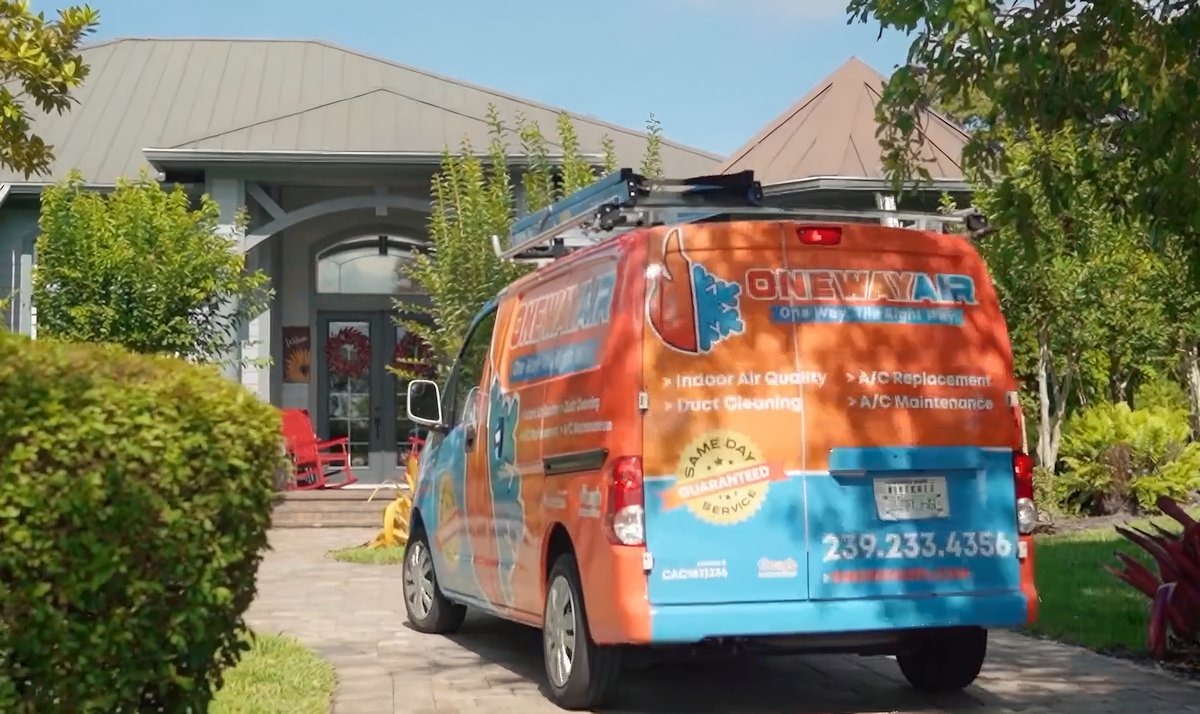
SCHEDULE REGULAR MAINTENANCE TO PREVENT A FROZEN AC
Regular, professional AC inspections and maintenance can prevent many problems with air conditioning—and ice forming is one of the main signs that your AC needs a tune-up.
A few simple measures like changing air filters and checking for vent obstructions can prevent basic airflow issues but most other causes of ice forming inside AC units require professional know-how. Persistent issues also usually require deeper troubleshooting.
Most problems can be fixed relatively easily by a professional if they are caught early enough. Contact an AC professional at One Way Air for an inspection, tune-up or repairs today.

